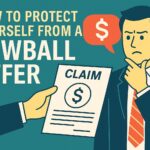At Stillman and Friedland, we handle many cases of “slip and fall” injuries. In legalese, we refer to these cases as “premises liability”. How do these cases happen, and how are they resolved? If you are shopping at a big box store and a display collapses on you, do you have a case? If your mother slips and falls in the supermarket because of a wet floor, can she make a claim? If your landlord fails to fix a broken step, will they cover your medical costs when you break your ankle? If your child enters the neighbor’s yard to retrieve a ball, and the dog bites him, can he` get compensation?
As you can see, premises liability covers a wide range of scenarios involving possible negligence on the part of the property owner. The key word here is “possible”. The injured party must prove that the property owner is indeed negligent in order to make a claim. In most cases:
- Having a competent attorney is key in getting a fair settlement if you have substantial injuries and loss of wages due to the injury.
Let’s look at the first two cases. Retail display injuries can be fatal. Whether in the event of death or injury, in the vast majority of cases, the retailer is clearly responsible for maintaining their stock and displaying it under safe conditions. A competent attorney will help you get fair compensation for your injuries and loss.
In the second scenario, proving liability is more difficult. If you fall on a wet surface because the floor was being washed, it is up to you, the injured party, to prove that there were no wet floor warning signs placed. If you fall because of a spilled product, you must prove that the store owner failed to clean up the mess in a timely manner. Simply put, if one shopper breaks a bottle of olive oil and another shopper slips and falls immediately afterwards, the store is not to blame. However, if several shoppers reported the mess and the management failed to clean up, then there would be a claim.
The difference in these cases is that in the first instance liability is clear. In the second case, photographs of the area and corroborating witnesses are necessary to prove the timeline and put the liability on the owner of the premises. This is parallel to the case of landlord negligence, whether the problem here is an unsafe set of stairs, insufficient lighting, or any other structural problems. Again, it is essential to:
- Document the problem by photographing it
- Notify the landlord in writing, and keep a copy (electronically or printed)
Be proactive! In other words, if you see a problem photograph it; if your landlord is not responsive and an injury results, you will have the documentation already. This is how cases succeed—when the evidence is clear.
In our last case, a dog bites a child when entering the neighbor’s yard. While adult trespassers have no rights in premises liability, children have the protection of the law. If someone comes in the night to break into your house and falls into a hole in the yard, you have no responsibility if he breaks a leg. On the other hand, if your child is bitten by the neighbors’ dog, you may pursue a claim. (Of course, any adult who is attacked by a dog in the public space, or as a guest on someone else’s property may pursue a claim as well.) However you must prove that the dog was not kept under the control of its owner, and that the owner was negligent in handling or securing the dog.
In any injury due to premises liability, a competent and qualified attorney is your best option to determine if you have a case which can be won. Stillman and Friedland have many years of experience in pursuing these cases successfully, and are happy to consult with you at no charge to evaluate your case.






